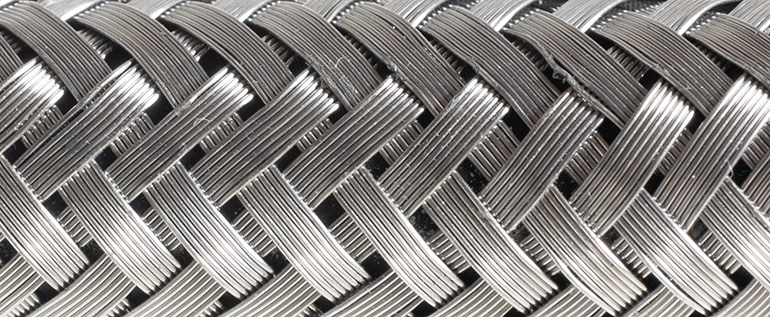By Josh Cosford, Contributing Editor
Hydraulic hoses come in many sizes and designs, and the expression of each design is a result of the purpose of that hose. Generally, there are three common locations where a hose is used in a hydraulic system: suction lines, working lines and return lines. Each location has its own needs, which may result in different hose constructions to serve that purpose.
Pressure lines are subjected to the whole gambit of pressure from the pump, such as the main line from the pump or the working lines going to and from the actuators. I can think of no hydraulic hoses used for these purposes that do not include a reinforcement layer to increase the pressure capacity. In some cases, textile or synthetic reinforcement is used, with ninety-five percent of the pressure lines using a steel wire-reinforced hose.

The reinforcement could be spiral wound or braided in layers from one to six, as pictured above. As expected, the more layers of reinforcement in the hose, the higher the pressure it handles. In general, spiral-wound reinforcement offers superior pressure capacity but often at the sacrifice of flexibility.
If you have a high-flow, high-pressure system, you’ll likely need a large-diameter hose from the pump, which could likely be a 4- or 6-wire spiral reinforcement. In the likelihood that it extends to a large valve bank or manifold that distributes flow to various actuators at a fraction of pump flow, you are free to select more economical hose choices, such as 2-wire braided designs.
Believe it or not, the correct choice of pump suction hose could have the most impact on machine performance. Avoiding excessive vacuum under high flow makes the selection of a large-bore suction hose important. You must limit fluid velocity to prevent cavitation, so be sure to choose your suction hose diameter based on up to 1.5 ft/sec maximum.
Because the suction hose must resist negative pressure without collapsing, the design considerations are vastly different from the wire-reinforced hose for pressure. For example, the reinforcement tends to be embedded into the inner tube, holding the tube firm despite the attempts from the atmosphere to crush it.
The wire reinforcement will be a single or dual helical coil rather than finer wire laid tightly together. The idea is to create a structure to prevent collapse but not be so stiff as to be challenging to manufacture, handle or install.
The return line in hydraulic systems has more flexibility in wire-reinforcement choice. What’s important is to limit back pressure, so these lines will be oversized compared to pressure lines but less so compared to suction hoses. In reality, you can select any hose for the job so long as it’s large enough to limit velocity to less than 10 ft/sec. High back pressure in return lines can affect machine performance and damage tank line components such as the filter.
Because you’re much more open to options, your best bet is to select the most economical choice. Sure, you could use the larger, 4-wire hose you already have in your shop, but that hose is expensive and difficult to manage. Your best bet is to find an economical option like the 1-wire braided hose, which is available in large sizes for a fair price.
Filed Under: Components Oil Coolers, Engineering Basics, Featured, Hose & Tubing, Hose Assembly Tips, Technologies